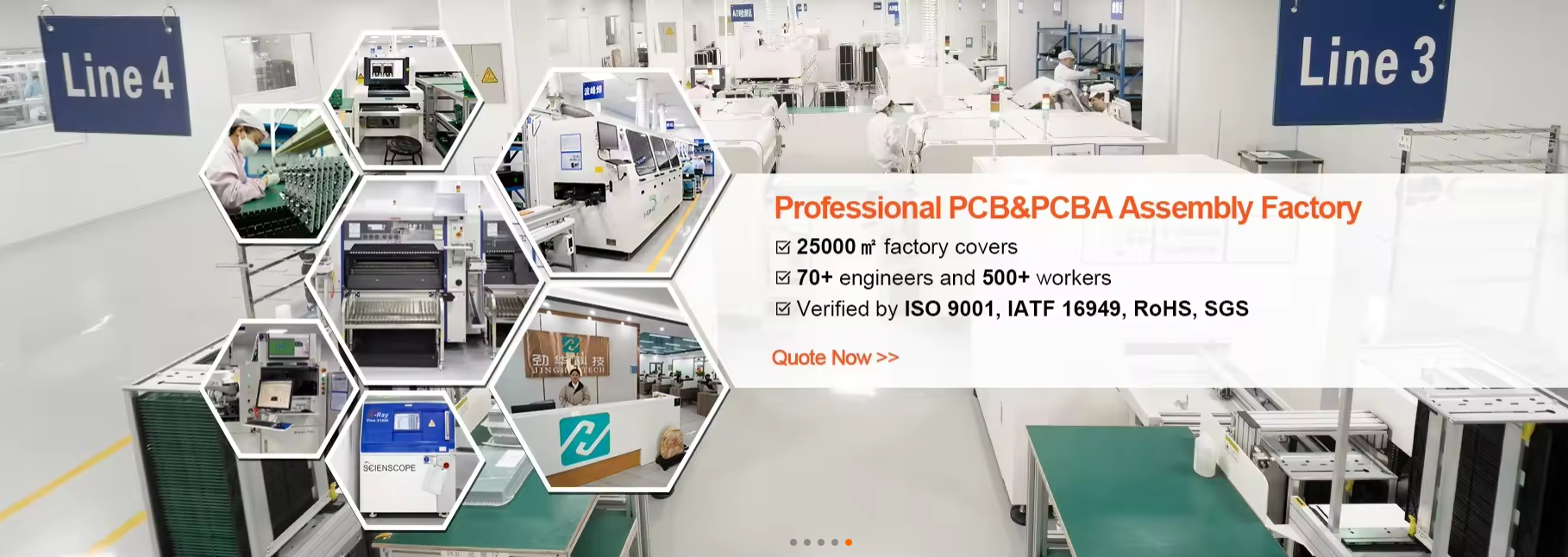
Mastering PCB Assembly: Step into the Future
The PCB assembly process is a fascinating journey of precision, automation, and technology. Today, we’re going to explore the advanced Industry 4.0 PCB assembly line, a facility that has embraced a high degree of automation, resulting in a nearly operator-free shop floor. This “shop floor of the future” shows how automation is transforming the manufacturing landscape. Let’s take a step-by-step look at the PCB assembly process.
1. Laser Marking
The process begins with a raw PCB, referred to as the “burr board,” which is first marked with a unique serial number by a laser marking machine. This unique identifier is generated by the ERP system and is essential for tracking each board’s journey throughout the manufacturing process. The machine records this data, which can then be collected by the IoT system, enabling full traceability for each PCB.
2. Solder Paste Application
Next, the screen printer applies solder paste through a stencil specific to each job, designed meticulously by the IoT system’s process preparation tool. This step is critical as it lays the foundation for component placement. The stencil printing process is sensitive to environmental factors like temperature and humidity, so inspections and tests follow this stage. Using the IoT system Material Management, operators can verify the correct stencil and paste by scanning the stencil barcode. The solder paste inspection (SPI) machine then checks the print quality, ensuring paste application only where required and according to the design.
3. Pick and Place
There are three types of pick-and-place machines:
- Fast pick-and-place: for high-speed component placement.
- Precision pick-and-place: for small, sensitive components requiring high accuracy.
- High-pressure pick-and-place: for boards needing force for component integration.
This multi-machine setup allows an assembly to handle a variety of PCBs with flexibility and precision. Valor Process Preparation generates the assembly programs for these machines, while Valor Material Management tracks material usage and replacement.
4. Visual Inspection and Soldering
After pick-and-place, operators visually inspect the boards to confirm proper component placement before soldering. The soldering process uses a reflow oven, divided into chambers with distinct temperature and speed settings. Valor IoT collects data on the actual conditions in the reflow oven, ensuring that soldering is precise and reliable. A final check confirms each component’s position and solder quality.
5. Through-Hole Assembly
Following SMT, additional placement methods come into play, such as through-hole assembly, where components are manually positioned on the PCB. These components are then soldered using a selective soldering oven, a process allowing precise soldering of specific areas.
6. Testing: Bed of Nails & Flying Probe
Two methods for electrical testing:
- Bed of Nails: Ideal for high-volume production, offering fast testing times but requiring complex fixture development.
- Flying Probe: Best suited for high-mix, low-volume production, it’s easier to adapt to new products but takes longer to program and execute.
Both testing methods generate data captured by Valor IoT, ensuring each board meets quality standards.
7. X-ray Inspection and Functional Testing
For large BGA components with hidden pins, X-ray inspection can be used to verify connections and solder quality. Functional tests then confirm the PCB’s performance. At this stage, any issues have ideally been caught earlier, minimizing defects in the final product.
8. Final Assembly and Packaging
In the final stage, mechanical parts are assembled, either manually or by robots. Once assembly is complete, the finished product is packaged and prepared for delivery to the customer.
Conclusion
The PCB assembly process demonstrates how automation, precision equipment, and integrated solutions create a seamless production flow, ensuring quality and efficiency. By adopting such advanced processes, companies of this kind lead the way in modern PCB manufacturing.
FAQs
- What role does the ERP system play in PCB assembly?The ERP system generates unique serial numbers for each PCB, enabling complete traceability through the manufacturing process and ensuring data integrity at each stage.
- Why are different pick-and-place machines used?Different pick-and-place machines cater to various component sizes and placement requirements. This variety provides flexibility, ensuring high-speed, high-accuracy placement and the ability to handle complex assemblies.
- How does the Valor IoT system improve the PCB assembly process?Valor IoT connects with various machines, collecting data on soldering conditions, component placement, and inspection results. This data integration ensures quality control, traceability, and efficient management of resources throughout the production line.


